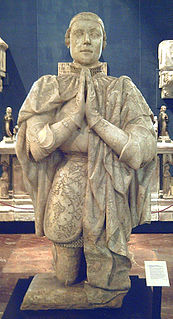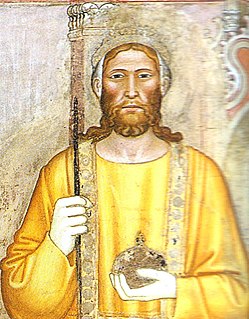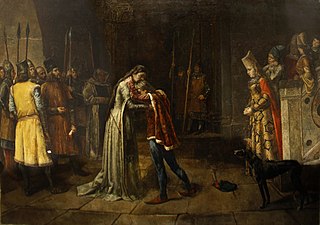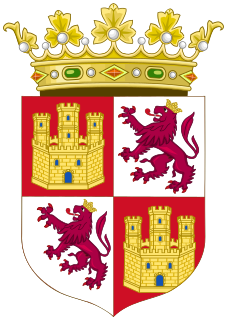See also
- Peter I Island, Norwegian uninhabited volcanic island in the Bellingshausen Sea
- Petar I (disambiguation)
- Pedro I (disambiguation)
- King Peter (disambiguation)
Peter I may refer to:
The 1380s was a decade of the Julian Calendar which began on January 1, 1380, and ended on December 31, 1389.
The 1360s was a decade of the Julian Calendar which began on January 1, 1360, and ended on December 31, 1369.
Year 1367 (MCCCLXVII) was a common year starting on Friday of the Julian calendar.

Peter, called the Cruel or the Just, was the king of Castile and León from 1350 to 1369. Peter was the last ruler of the main branch of the House of Ivrea. He was excommunicated by Pope Urban V for his persecutions and cruelties committed against the clergy.

Ferdinand I, sometimes called the Handsome or occasionally the Inconstant, was the King of Portugal from 1367 until his death in 1383. His death led to the 1383–85 crisis, also known as the Portuguese interregnum.

Henry II, called Henry of Trastámara or the Fratricidal, was the first king of Castile and León from the House of Trastámara. He became king in 1369 by defeating his half-brother Peter the Cruel, after numerous rebellions and battles. As king he was involved in the Fernandine Wars and the Hundred Years' War.
Peter II may refer to:

Peter I of Cyprus or Pierre I de Lusignan was King of Cyprus and titular King of Jerusalem from his father's abdication on 24 November 1358 until his death in 1369. He was the second son of Hugh IV of Cyprus, the first by his second wife Alice of Ibelin. He was also invested as titular Count of Tripoli when young, in 1346. As King of Cyprus where he had military successes, but he was unable to complete many plans, due to internal disputes that culminated in his assassination at the hands of three of his knights.

Infante D. Pedro, Duke of CoimbraKG, was a Portuguese infante (prince) of the House of Aviz, son of King John I of Portugal and his wife Philippa of Lancaster, daughter of John of Gaunt. In Portugal, he is better known as Infante D. Pedro das Sete Partidas [do Mundo], "of the Seven Parts [of the World]" because of his travels. Possibly the best-travelled prince of his time, he was regent between 1439 and 1448. He was also 1st Lord of Montemor-o-Velho, Aveiro, Tentúgal, Cernache, Pereira, Condeixa and Lousã.
Peter of Portugal is the name of several Portuguese kings and infantes:

Fadrique Alfonso of Castile, 1st Señor de Haro (1334–1358), 25th Master of the Order of Santiago (1342–1358), was the fifth illegitimate child of Alfonso XI of Castile and Eleanor of Guzman. He was born in Seville.
Maria of Portugal is the name of several Portuguese queens, queens consort, princesses and infantas, some of whom reigned as Queen of Spain or other lands:

Peter of Coimbra was the son of Infante Peter, Duke of Coimbra, who became the fifth Constable of Portugal and third Grand Master of the Order of Saint Benedict of Aviz.

Margaret of Savoy, also known as Marguerite de Savoie or Margherita di Savoia, was the eldest surviving daughter of Louis I, Duke of Savoy. She was the wife of Margrave John IV of Montferrat, and later the wife of Peter II of Luxembourg, Count of Saint-Pol, of Brienne, Marle, and Soissons.
Charles I may refer to:

The Castilian House of Burgundy is a cadet branch of the House of Ivrea descended from Raymond of Burgundy. Raymond married Urraca, the eldest legitimate daughter of Alfonso VI of León and Castile of the House of Jiménez. Two years after Raymond's death, Urraca succeeded her father and became queen of Castile and Leon; Urraca's and Raymond's offspring in the legitimate line ruled the kingdom from 1126 until the death of Peter of Castile in 1369, while their descendants in an illegitimate line, the House of Trastámara, would rule Castile and Aragón until the 16th century.